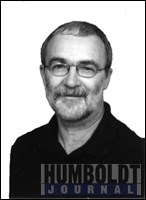The inaugural Saskatoon Regional Growth Summit, hosted by the Saskatoon Regional Development Group, was held Nov. 20-22, with many dignitaries and local politicians attending the event, including Humboldt's Mayor Malcolm Eaton.
The reason for the three-day conference, a first of its kind, was simple: Saskatoon is expected to be among leading communities in Canada in percentage GDP and population growth for years to come.
"This conference brought together RMs, towns, villages and cities in the northern part of province," Eaton said, noting Regina had a similar one for communities in the southern area.
With all the ideas and observations tossed around at the meetings, there was one specific focus that has been supported by the provincial government.
"Communities need to work together more than they do," Eaton said. "That's something the Government of Saskatchewan is strongly urging its cities and towns to take on. But how do we promote that?"
The notion of land use planning is one of the issues that falls under this category and although Humboldt is no stranger to that idea (they recently formed a Regional Planning District with the RM of Humboldt), Eaton was able to hear inspiration from further than just the Prairies.
There were speakers from the state of Oregon, talking about growth planning in that area, and a representative from Victoria, B.C. and Edmonton, Alta. as well.
"They were all from areas of North America where instead of amalgamating, the communities have banded together to co-operate with one another but still retain their independence," Eaton said.
"So in that sense, it was interesting to learn how we can work with our surrounding communities like Muenster, Watson and the rest of them," he said. "It's more common to see collaboration now."
Other planning ideas included questions like what does this urban sprawl mean, an issue the City of Humboldt has been quietly tackling for the past little while, the objective being to try and estimate which direction the city will grow toward in the next 20 years and what impact that will have.
"There were questions like 'If you build up and you build more condos or apartments, what does that mean,'"Eaton said.
It's a construction tactic that is becoming increasingly popular in cities, since there's no need for the installation of additional infrastructure, like water and sewer lines.
In conjunction with that, Eaton said they learned that infill development is a trendy idea in urban planning and one that is "win-win" across the board.
Infill development is when an empty lot is used between two existing houses, or an old property is torn down, to make a duplex, triplex etc.
Eaton said it's hugely effective for a city.
"With that type of housing comes a larger tax base, which helps pay for infrastructure anyways," he explained. "Plus, it provides more housing options, possibly rentals, and the existing infrastructure isn't as costly because this typically happens in older neighborhoods."
One goal Eaton has for Humboldt in 2014 is to focus on housing development, specifically rentals, so hearing the idea of infill development struck a chord with him.
Right now, he's definitely on board with that idea but admits there needs to be "incentives" to motivate developers to do this.
"But we heard we're on the right track," he said.
Another planning aspect hammered home at the conference was the importance of downtown development, something the City of Humboldt is currently trying to address since the Co-op grocery store moved west of town this past summer, leaving many residents pondering if Main Street and the downtown core will fall into obscurity.
"We're doing the right thing by working with the Downtown Business Improvement District (BID) on this, for sure," Eaton said. "Downtown development is massively important, especially to Humboldt and definitely to me," he added.
One thing Eaton would like to see is more people living downtown.
"When you have people living down there, then you have activity there too," he explained. "It supports local businesses, affects the crime rate and the list goes on. So we need to support downtown Humboldt as a more livable place."
To do this, Eaton suggested properties in the downtown area that could easily become apartments or rental units, a nod to the popular urban planning idea of "building upward, not outward" and using existing infrastructure to cut costs.
There were many planning ideas to borrow from the growth summit and Eaton said it was hugely beneficial to hear from other communities that have gone through, or are currently going through, the same issues as Humboldt.
"It was a matter of hearing 'do this, don't do this.' It was just a big help to hear from other communities and what they've done and what they suggest not to do," Eaton concluded.




